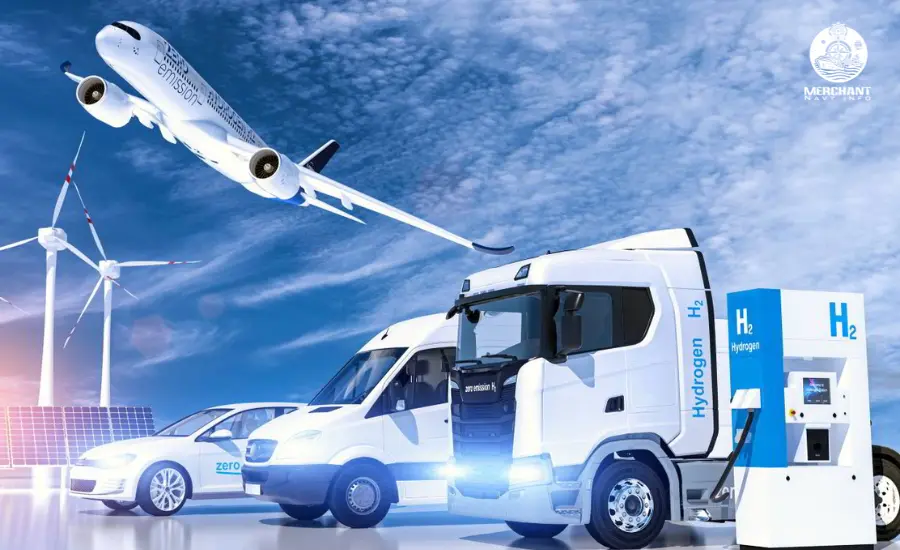By MERCHANT NAVY

According to a recent investigation by Hydrogen Insight, the registrations of new hydrogen fuel cell vehicles (FCEVs) in most European markets are stagnating. Despite the plans of various companies to establish numerous H2 refueling stations (HRSs) in several countries. This is despite new EU legislation that mandates the construction of hundreds of new refueling spots by 2027.
Hydrogen car registrations falling
Data collected from all European countries with at least one hydrogen refueling station (HRS) indicates that the registration of fuel cell electric vehicles (FCEVs) has either stalled or declined in all but three countries. (Please note that registrations may include vehicles that dealerships have yet to sell to a business or individual.)
Germany, which is known as Europe’s largest hydrogen car market. Experienced a significant decline in new FCEV registrations in 2023, as reported earlier by Hydrogen Insight. The drop was almost 70%.
Although hydrogen vehicle sales are still small in comparison to those of battery-electric equivalents. France is becoming one of the most dynamic FCEV markets in Europe. Last year, only the UK and Czechia saw more than ten FCEV registrations per HRS. Making them the only other European nations to achieve this.
Swiss Federal Office for Statistics
According to the Swiss Federal Office for Statistics, Switzerland has one of the largest concentrations of HRSs in Europe. However, last year. The total new registrations for FCEVs decreased by 50%, with only 28 passenger cars and 10 commercial vehicles registered. In contrast, Switzerland registered 40,507 battery-electric vehicles (BEVs) in 2023.
This runs counter to the argument that the reason for the low uptake of FCEVs is the lack of hydrogen filling stations; Switzerland has 15 refuelling stations already, most of which are located in the populous north and west of the small Alpine state, according to the H2.live website, which maps RFSs across Europe.
The number of fuel cell electric vehicles (FCEVs) registered in the Netherlands has significantly dropped in 2023. In the first nine months of the year, only 29 FCEVs were registered, compared to 122 in the same period last year, marking a 76% decrease. Out of these 29 vehicles, nine were buses. In the same period, 10,292 battery electric vehicles (BEVs) were registered.
Despite 19 H2 filling stations in the Netherlands, FCEV registrations dropped. The government’s €22m subsidy program for hydrogen trucks and stations wasn’t effective. But in Sep. 2023, they increased the FCEV subsidy program to €150m. The “Hydrogen in Mobility” program will provide funding of up to €300,000 per fuel-cell vehicle and €2m per filling station for both options together.
Operator Everfuel closed all three of Denmark’s hydrogen refueling stations last year, leaving over 100 taxis and other users stranded due to lack of profitability.. Unfortunately, this led to a significant drop in the number of commercial fuel cell electric vehicles (FCEVs) on the road. In fact, only one commercial FCEV was registered, and there were no hydrogen car registrations. In contrast, there were 65,483 battery electric vehicles (BEVs) registered. The previous year, six FCEVs were registered, according to Statistics Denmark.
Total and Air Liquide launch hydrogen mobility joint venture with plans to build 100 filling stations -in Europe
The article discusses the current state of the FCEV market in various countries. It mentions that several HRSs in Denmark are facing technical difficulties. In South Korea and Japan, FCEV sales are dropping, but in China and the US, they are growing. Hydrogen vehicle sales in France have increased, but they remain a small fraction compared to the sales of battery electric vehicles. Stellantis plans to launch new hydrogen van models in 2024, and this launch is likely to drive an increase in FCEV sales.This week, TotalEnergies and Air Liquide formally launched their 50-50 joint venture for hydrogen refuelling, Teal Mobility. Which aims to have up to 20 stations up and running by the end of 2024.
World’s third-largest automaker to introduce eight new hydrogen-powered van models in Europe
The European Union has mandated the presence of hydrogen refuelling infrastructure on its major roads by 2030. Despite a low base, there was an uptick in new registrations of fuel cell electric vehicles (FCEVs) in Belgium, with 12 FCEVs registered in 2023. FCEV sales in Austria fell by over a quarter. From 14 to ten, while in Sweden, just two hydrogen cars were registered last year. The Czech Republic registered 21 Toyota Mirai cars in 2023, up from just one the previous year.
UNRAE compiled annual statistics which indicate that Italy and Latvia only have one H2 filling station each, and no one registered at either station. The National Union of Foreign Motor Vehicle Representatives (which includes Italian-made vehicles in its figures) . The Latvian Road Traffic Information Council.
EXCLUSIVE | Hydrogen car sales in Japan have fallen by 83% over the past two years, new figures show
Three European countries, namely the UK, Norway, and Iceland, have operational hydrogen refuelling stations (HRSs) outside the European Union. The UK has five HRSs and witnessed a 261% increase in fuel cell electric vehicle (FCEV) registrations in 2023, with 65 registrations compared to 18 in 2022, as reported by the Society of Motor Manufacturers and Traders. The nation’s transportation agency registered only one hydrogen-powered car in 2023, and Iceland currently has two H2 filling stations. Norway had a total of two fuel-cell cars registered in 2023, corresponding to the number of hydrogen filling stations, according to OFV, the country’s road traffic information council. Last year, Europe witnessed 750 new FCEV registrations that were fuelled by 168 HRSs. Whereas Asia had around 11,000 FCEVs and 430 HRSs, taking into account the aforementioned caveats.









